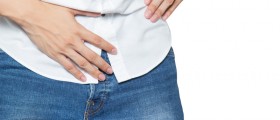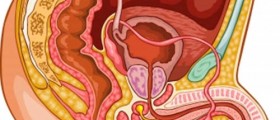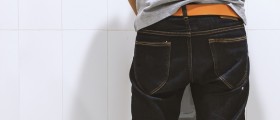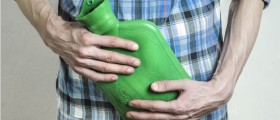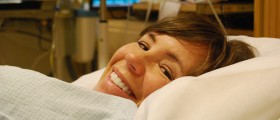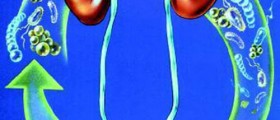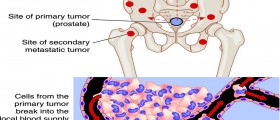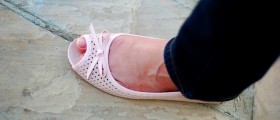Since they are in the same network the local uro will not refer to anyone outside of the network. That definitely limits the patient’s options.
Loading...
Loading...
Loading...
DL, as you have reported, the technique employed by Dr. Scoffone of Turin Italy has good success rate with about 86% of the patients experiencing NO SIDE EFFECTS. When are US surgeons going to catch up?
Loading...
Loading...
Not anytime soon. My impression of urologists is they are not eager to use new technologies, techniques or methods. They are pretty conservative. Even Dr. Das, I failed to engage him in a conversation on the low power en bloc one touch technique.
Loading...
Loading...
I have been out of town for a few days and had no incontinence. Yesterday, Saturday, I spent time in my recliner relaxing and doing a small amount of typing. Last night my pad was wet. My assumption is that since I push on my body to get out of the recliner I am experiencing stress incontinence. According to my reading stress incontinence is controlled by the bladder sphincter. We all know that it is damaged to one degree or another depending on the doctor.
Loading...
Loading...
Loading...
At this point, I am confused and I have no idea if the internal sphincter will grow back. I am also not sure stress incontinenence is due to the internal sphincter. All I know is that the papers I read said that the incontimence is transient that is it recovers overtime. In real life, patients do recover from incontinence.
If u are positive that stress incontinence is indeed due to the internal sphincter then the fact that incontinence recovers over time suggests the internal sphincter will grow back.
Loading...
Loading...
hi buster,
Could u send me the links that prove stress incontinence is due to the weakening of the internal sphincter?
I could see why u have a renewed interest in this topic. Just Did a Google search on "stress incontinence sphincter".
My current understanding is that stress is due to the urine pressure in the bladder exceeds the total resistance to urine flow. For men, the total resistance comes from the internal and external sphincters. Thus coughing, lifting of heavy objects or excercise could cause a sharp rise in bladder pressure to an amount that it exceeds the resistance offered by the internal and external sphincters. This causes urine to leak. Thus it is obvious that when stress occurs if the internal sphincter is compromised, it is much easier for urine to leak causing stress incontinence. This is independent of whether we think if the external sphincter is the only valve needed to control urine flow or not. The internal sphincter will definitely help as its closure will provide addition resistance to urine flow.
See for example www.karger.com/Article/FullText/77875
there is indeed evidence that the stress incontinence is due to the internal sphincter.
www.sciencedirect.com/topics/medicine-and-dentistry/stress-incontinence
"7.19.3.2 Stress Incontinence
Stress incontinence is characterized by the involuntary loss of urine during physical movements that increase intra-abdominal pressure, such as coughing, sneezing, laughing, or other physical activities. Stress incontinence is established if the urine loss is coincident with an increase in intra-abdominal pressure, but occurs in the absence of a detrusor contraction or an overdistended bladder (USAHCPR, 1996). The most common cause of stress incontinence occurs in women as intra-abdominal pressure results in a significant displacement of the urethra and bladder during exertion.
Stress incontinence may also be caused by a deficiency in the sphincter muscle that closes off the bladder outlet. Normally, the sphincter is relaxed when voluntary bladder emptying begins, but closes off the bladder outlet during other times. In women, this incontinence is commonly a result of multiple surgical procedures, low estrogen levels due to age or other causes, or both. In these cases, the urethra sphincter is unable to generate enough resistance to retain urine in the bladder when bladder pressure is raised. Patients with stress incontinence can leak continuously or with minimal exertion.
It is not unusual for people to have a combination of urge and stress incontinence. When both symptoms are present, the incontinence is called mixed. Mixed incontinence is particularly common in older women."
"SUI is caused by ineffective urethral closure, which is related to the deficiencies in extrinsic urethral support or intrinsic urethral integrity, during times of increased abdominal pressure. SUI therefore can be classified further into bladder neck hypermobility and intrinsic sphincter deficiency (ISD). Although bladder neck hypermobility is the major cause of SUI, many women with this condition do not have urinary incontinence if their urethral sphincters are strong and well functioning. Bladder neck hypermobility and ISD can occur together,..."
(Note: this para implies if the external sphincter is strong enough, one can do without the internal sphincter.)
In summary
The above suggests that istress incontinence seems to be due to the internal sphincter.
After HoLEP, stress incontinence is transient and will heal over time. This could suggest that the internal sphincter will heal over time unless the external sphincter will also get stronger overtime. In the latter case, whether the internal sphincter will heal or not will become inconclusive.
Loading...



